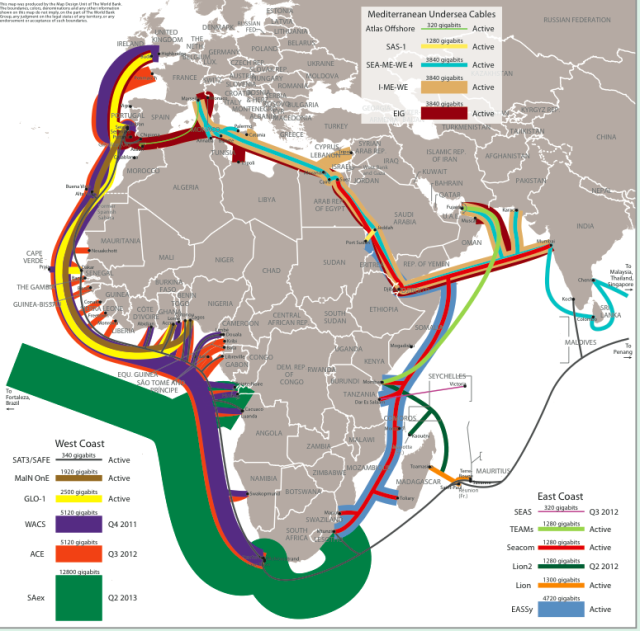South Africans under lockdown have to deal with slow internet after another undersea cable break

South Africans dealing with the disruption and frustration of a nationwide lockdown to prevent the spread of coronavirus are also confronting slowdowns in internet speeds.
Two of the undersea cables that connect South Africa to the global network are again suffering outages, dragging down mobile and landline data speeds nationwide. The slowdown comes as workers and students confront the challenges of staying at home because of Covid-19.
The West Africa Cable System (WACS), a submarine fiber-optic line that carries data between the UK and the west coast of Africa, tore on Saturday about 24 miles from Britain in roughly the same spot that the cable broke in January.
The break, which is requiring providers to reroute traffic to cables that drape the continent’s east coast, is at least the third fault to plague the WACS so far this year.
“We are aware of increased latency, slow speeds due to damaged undersea cables, affecting most ISP’s,” Axxess, an ISP that serves cities across South Africa, told customers on Saturday. It is not expected to be repaired till Saturday, April 4.

There is likely to be some slowdowns or disruptions in other African countries as the WACS cable serves several other territories along the western coastline of Africa including Namibia, Angola, DR Congo, Cameroon, Côte d’Ivoire and Nigeria among others.
It follows a rupture to the South Atlantic 3/West Africa Submarine Cable (SAT-3), which routes internet traffic between Spain, Portugal and South Africa. Repairs to the cable, which went down on Ma 9 off the coast of the Democratic Republic of Congo, are expected to be completed on Thursday.
MTN Group, an investor in WACS and Africa’s biggest mobile carrier, says it “is working with our suppliers to restore WACS as quickly as possible,” adding that its network has not affected by the outages after routing traffic to the east coast cables “to accommodate the international bandwidth demand.” WACS and SAT-3 both come ashore in South Africa’s Western Cape province.
A cable-laying ship is expected to arrive at the WACS on Tuesday to dredge up and mend the link, which is expected back online by Saturday.
Failures of the subsea cables highlight the challenge of maintaining high-speed connectivity across Africa, which has some of the world’s most expensive internet access.
In late January, both the WACS and SAT-3 broke off the coast of the Democratic Republic of Congo after reportedly becoming trapped in an undersea canyon. As crews finished work to repair that fault, another section of the WACS broke near the UK.
Besides SAT-3, two other subsea cables that serve the continent also failed in early March, although the WACS absorbed the traffic, according to TENET, which operates South Africa’s research internet.
The outages have added to the frustrations of South Africans, who besides adjusting to life under lockdown have contended until recently with regularly scheduled cuts to electricity by the state-owned utility Eskom.
“The undersea cables affect everything from mobile to fiber,” says Ruli Sofilas, a resident of Durban who relies on his internet connection to send video to customers of his boat business. “The president talks about a fourth industrial revolution, but when you have erratic electricity and then these internet slowdowns, everything seems to be going against business in general.”
Sign up to the Quartz Africa Weekly Brief here for news and analysis on African business, tech and innovation in your inbox
Sign up for the Quartz Daily Brief, our free daily newsletter with the world’s most important and interesting news.
More stories from Quartz:
Auto insurers are collecting billions in extra profit as Americans shelter in place
For over 200,000 Indians, the wait for a green card is longer than their lifetimes

